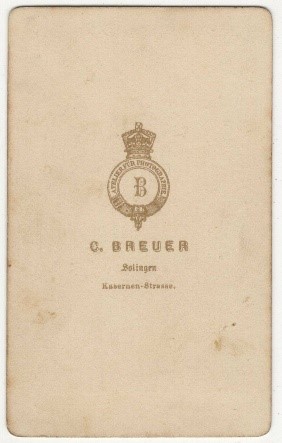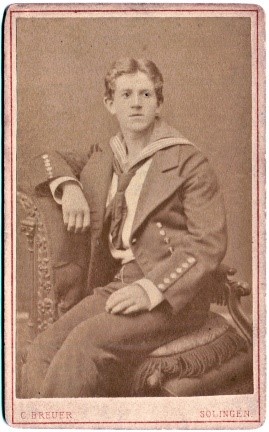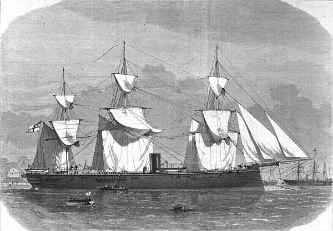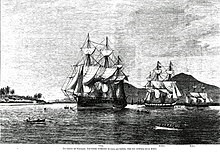The history of Germany itself is fascinating not least because of its complexity. Solingen was at the eastern part of Dusseldorf, a larger part of the Rhineland bordering Holland and Belgium. Following the dissolution of the Holy Roman Empire in 1806, the confederation of the Rhine included much of what is west Germany, into a client state of France under Napoleon I. In 1815 the German Confederation formed at the Congress of in Vienna to include 39 sovereign states and in 1871 the German Empire was formed, with Wilhelm of Prussia becoming its first Emperor.
So it is a bit of an easy shortcut to say that Julius was born into a Germany.
Wupper is a picturesque town on the west bank of the River Wupper about 7km South of Solingen. There is a castle across on the east bank but it is not clear if the Burg was specifically involved. The castle itself fell into decay in the 17C and was partially destroyed by Imperial Troops. In 1700 the main buildings were reconstructed and used for administrative purposes, but in 1846 the castle was sold for scrap and became a ruin. It was not until 1882 that proposals to reconstruct the castle, a project which would last till 1914.
At aged 18 in around 1878 Julius was conscripted into the Kaiserliche Marine, the Imperial German Navy which grew out of the small Royal Prussian Navy.


In 1872 there began a 10 year expansion program of building a modernised fleet, paid for in part by the reparations from the Franco Prussian War. Julius was stationed on the SMS Ariadne, named after the Cretan princess in Greek mythology and built at Danzig 1871, it would have a crew of 232. She was one of 6 armoured steam corvettes


Over the winter of 1879–1880, Ariadne underwent a thorough overhaul at the imperial Shipyard in Wilhelmshaven, and on 1 April she was recommissioned for another deployment to South America. She left Germany on 14 April most likely under the captain Bartholomäus von Werner, and arrived in Montevideo, Uruguay on 6 June, though unrest in Argentina prompted her to go to Buenos Aires to protect German interests. After the situation had calmed, she passed through the Strait of Magellan and arrived in Coronel on 11 August, where she replaced the ironclad corvette Hansa. Ariadne was then tasked with observing the Chilean and Peruvian ports during the War of the Pacific and to protect German interests.[9] In early January 1881, she took aboard sixty-four Germans at Ancón as a precaution against violence in the city. From 16 to 20 January, the ship sent a detachment of sailors ashore at Lima, Peru to help defend the Europeans in the city from plundering troops. On 14 July, Ariadne met the corvette Moltke that had been sent to replace her. Two days later, Ariadne left Valparaiso, steamed through the Strait of Magellan, and north through the Atlantic, arriving in Wilhelmshaven on 7 October. On the return voyage, she carried a banker from Frankfurt who had been charged with fraud and had escaped to South America, only to have been apprehended while Ariadne was on station. The ship transferred to Danzig later in the month and was decommissioned there on 31 October. When he returned he bought two shell cases which were with Peter.
In about 1881, aged 21 as a Petty Officer he was discharged and went almost immediately to London.
He went to work at Hatton Garden, London’s jewellery centre where his skills as a watchmaker would have been in demand. He lived at Percy St, Islington, about a 20-minute walk away.
After a year in London he went to work as apprentice to Winterholder in Kettering.
The firm Winterhalder Clock Factory was established in 1810 by Thomas Winterhalder, although his family had been making clocks since 1730s. The company were considered to make the finest clockmakers. It is likely that Julius came to work for Winterhalder & Hofmeier.
There is also a report concerning Joseph Winterhalder, an expert watchmaker and immigrant from Friberg, Baden, Germany. Born in 1828 and baptised into the Lutheran Church he was an excellent singer and established himself in Leicester, in 1853. There is report of a performance of Stabat Mater which he may have been involved with in the Italian Church, Hatton Gardens, London, on 13th March 1864. So there is a link perhaps with Joseph traveling to Leicester to trade as a clockmaker, where the fellow German Julius might have found him out after meeting him in London. Winterhalder died in 1900 and is buried in the Welford Road Cemetery Leicester.
In the mid 1880s he would have set up his own business in Desborough. In 1991 he is recorded as being an “instrument maker”. He has found himself a house in 4 Station Road and is living there sith John Cross, a 52 year old Ironston labourer, his wife Rowena Cross, a laundress and on the night of the census, a 5 year old girl Louisa Bennet, marked as a visitor.
In trade directories of 1890 Julius is mentioned as having shops in Desborough and Rothwell but no address is mentioned.
In 1906 when he was 46, there were around 80 watchmakers in the area only a few of where are recorded as clockmakers also. Hief and Winterhalder are both recorded but in different towns, neither of which were marked as clockmakers. Perhaps Winterhalder is an offshoot of the German clockmakers. In any event Julius seems to be relatively successful. He manages at some time to have shops in Desborough Market Harborough & Rothwell, all within 25 miles of each other. He is becoming part of the establishment and is able to help to fund his brother-in-law to build a cement factory in 1912, aged 52.
He was quite clearly an accepted member of the society. After living on Station road, in number 4 Which has now been demolished to make way for a parking area for the pub, he had two houses built on Havelock St, number 4, which he lived in from 1906 and number 6 which was a Grocers shop for his brother-in-law, which is now the local post office. He also apparently bought 4 more houses “by the village cross”. Frederick mentions several local townspeople who they had close contact with. Mr Walice a schoolmaster is mentioned. The 1911 census shows Mrs Wallis is living in the schoolhouse with two other unidentified women in Havelock St, just a few doors away from their home. The school that Frederick would have attended. Also a Boot maker, Mr Charles Reculist and the Vicar Reverend Lindsay. Mr JR Moore was also an acquaintance who wrote the History of Desborough, a copy of which exists with someone.
He was apparently involved in a local archaeological society and would spend time on digs. In the fields to the side of the Rothwell Road, near the top of the hill where the ironstone quarry was he taught his son how to excavate and they found a large number of Romano-British coins. It was at this time that a gold Saxon necklace and bronze mirror was discovered. The mirror was broken with the handle separated from the polished mirror. Julius, with his skills as a watchmaker was tasked with “repairing” the mirror, adding a small plat and some screws to hold it al together. He also apparently repaired the necklace. These two items are now in the British museum and it is not known how happy they are exactly with the local watchmaker messing with what is now known as “the Desborough Mirror”. The museum has a huge ledger, filed in by hand for every acquisition of items, carefully listing what the item is.
Julius was also close to Clarke-Thornhill who owned Rushton Hall, 2½ miles to the east of Desborough. He had leave to use the grounds whenever he wished and spent time going round the hall checking the clocks. It is in the grounds that there is the Triangular lodge built as a folly, and allegedly where the Gunpowder plot was hatched. In 1910 the Hall was sold and bought by Van Allen the diamond merchant. During the sale Julius bought a picture by Panini. This was in Peters possession in the year of the Saga.
In 1916 the family left Desborough for Cambridge. He would have been around 56 and Frederick would have been 25. First of all moving to Chesterton Road, and then to de Freville Avenue. Chesterton Road was a busy main road, across the river from Jesus Collage leading to Chesterton, but de Freville Avenue was different altogether. Once named one of the best places to live in Britain the newly built estate of Edwardian houses were and still are luxurious and spacious family homes named after a Norman family whose tombs are in Little Shelford Church. The house, number 86 was at the end of the street making it even more secluded, and beyond would be meadows leading down to the river and looking across to Midsummer Common. It would have been a delightful setting for the autumn of his life. The aspect has been somewhat spoiled, first by a rather ugly addition to the house, and then by further houses squeezed onto the end of the road, and a further development blocking off the river from access. Sometime later they family moved just up the road to the slightly larger number 55.
It was in Cambridge that Julius worked at the Cambridge Instrument Company as a “tester of the watch mechanism on time shells and bombs”. Although it was to some degree the war with Germany which had strained relations with his in-laws, this does not seem to have been a problem with the CIC employing a naturalised German. Especially in such sensitive war related work. The company, founded by Horace Darwin, sone of Charles, was located probably about a mile away in Tibb's Row. Julius continued to work there until his retirement in 1930, aged 70, and died suddenly 11 years later. His ashes were buried at Huntingdon Road Crematorium. His will at Probate was valued at £1,483-17/6d. the current value might perhaps be in the region of £92K.